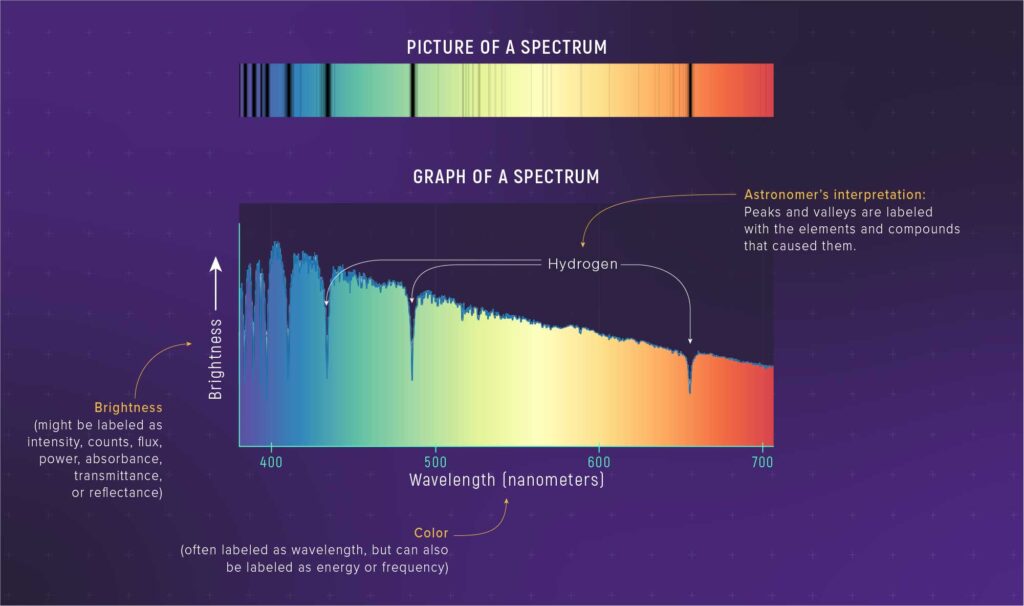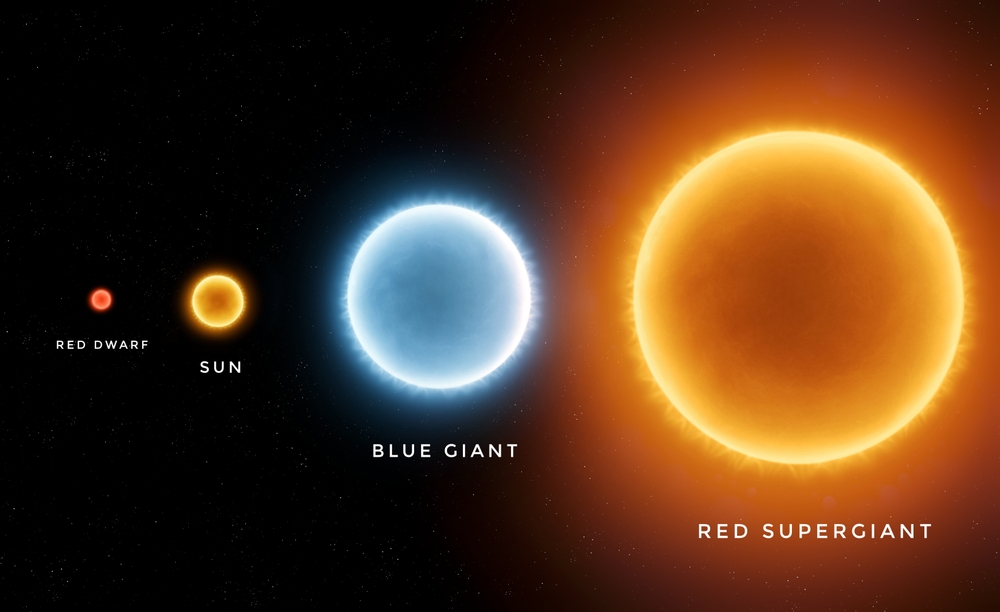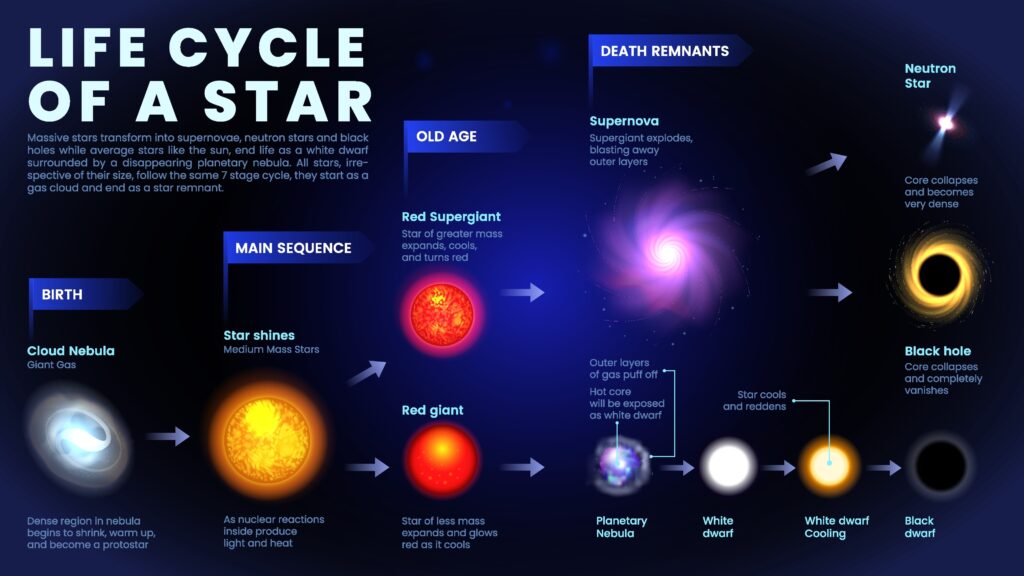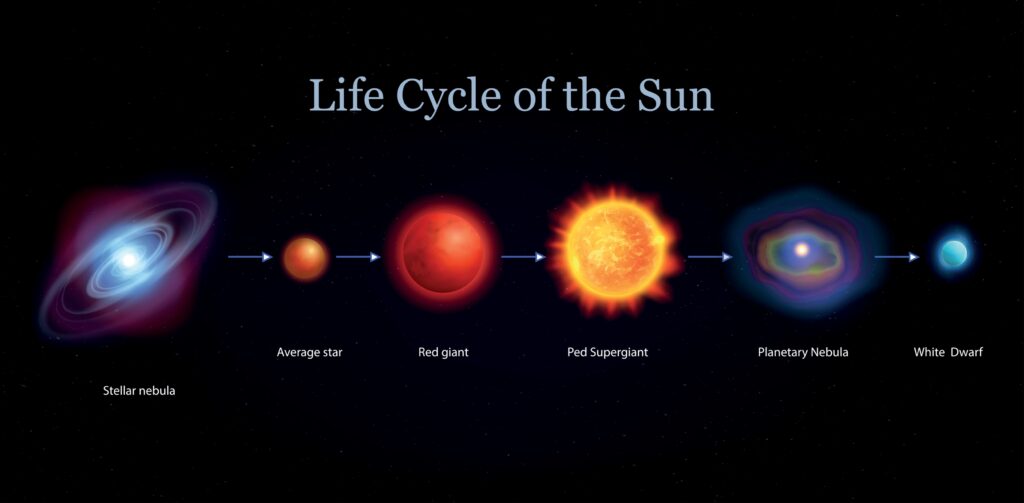
The study of stars, fundamental to astrophysics, relies heavily on analyzing their colors, a practice that not only reveals the temperatures of these celestial bodies but also their chemical compositions. As we delve deeper into space exploration, understanding these aspects becomes increasingly crucial. This article explains how astronomers use the color of stars to determine their makeup and why this is pivotal in advancing our knowledge of the universe.
Star Color and Temperature
Star color directly correlates with surface temperature. Blue stars are hotter, emitting more light at shorter wavelengths, while red stars are cooler, emitting light at longer wavelengths. This relationship between color and temperature is governed by Wien’s Law, which helps astronomers estimate how much energy a star emits and provides clues about its mass and size.

Spectroscopy: The Tool for Decoding Star Composition
Spectroscopy is the technique astronomers use to determine a star’s composition. By dispersing a star’s light into a spectrum, astronomers can observe specific dark lines known as absorption lines. Each element absorbs light at characteristic wavelengths, and these unique patterns allow scientists to identify the elements present in a star.
Example: The sun, our closest star, has strong absorption lines for hydrogen and helium, indicating that it is primarily composed of these two elements. This is crucial for understanding the processes that fuel stars and their lifecycles.
The Importance of Stellar Composition in Space Exploration

Understanding Stellar Life Cycles:
Knowing the chemical makeup of stars helps astronomers predict their life cycles. Stars with more massive elements than hydrogen and helium, for example, can burn hotter and faster, influencing their evolution and the types of remnants they leave behind, such as neutron stars or black holes.
Gauging Habitability and Planetary Formation:
Stellar composition affects the formation of planets. Systems with stars rich in heavier elements might form planets that are more geologically active or have thicker atmospheres, potentially increasing their habitability.

Navigating the Cosmos:
For interstellar travel and the future colonization of other planets, understanding starlight and its implications helps in navigating the vast distances of space. Spectroscopic data can inform spacecraft navigation systems, enabling more accurate travel through the cosmos.
Search for Exoplanets:
The spectroscopic study of stars also aids in the search for exoplanets. Variations in spectral lines can indicate a star’s wobble caused by the gravitational pull of an orbiting planet, providing evidence of planets that cannot be seen directly.
Enhancing Our Understanding of the Universe:
Every star has a story that tells more about the history of the cosmos. By studying the light from stars, particularly those in distant galaxies, astronomers can trace the universe’s expansion, the formation of chemical elements, and the dynamics of cosmic evolution.

The color of stars is a gateway to understanding more than just their beauty; it provides critical insights into their structure, composition, and the processes governing their behavior. As we push further into the era of space exploration, the importance of these insights becomes more apparent, guiding us in future missions and the broader quest to understand our place in the universe. The technical study of starlight is not just about observing the stars—it is about unlocking the secrets they hold within their light.
If you are interested in learning more about the history of space exploration, you can learn more about How the Liquid-Fueled Rocket Revolutionized Space Exploration.

